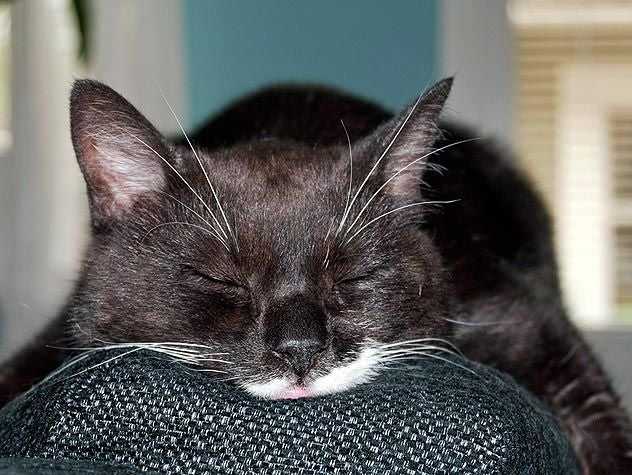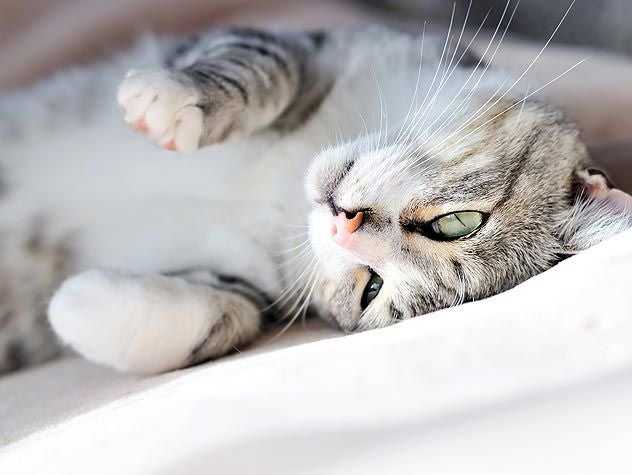Kidney Failure in Cats – Symptoms & Treatment

The kidneys of a healthy cat are part of an efficient, essential system that filters waste from his bloodstream and sends it out of his body through urine.
When kidneys fail — sometimes referred to as renal failure — there is nothing in your cat’s body to take over this important job. As a result, waste and toxins begin to build up in his blood.
Types of Kidney Failure
There are two types of kidney failure in cats: chronic (ongoing) and acute (urgent). With chronic kidney failure, a cat’s kidneys fail progressively over time. An acute failure, on the other hand, presents an emergency that must be treated immediately. This doesn’t mean that chronic kidney failure isn’t serious. On the contrary, it’s the leading cause of death in pet cats.
Is Your Cat at Risk?
Chronic and acute kidney failure have different sets of risk factors. Things that can increase a cat’s risk of developing chronic kidney failure include:
- Old age
- Poor diet
- Lifelong diet of dry food only
- Genetics
- High blood pressure
- Dental disease
- Low potassium levels
Any breed of cat can have chronic kidney failure, but it’s believed that Abyssinians and Persians develop the disease at a slightly higher rate.
Acute kidney failure can be caused by urinary tract blockages, abdominal trauma, infection, or poison. Therefore, a major risk factor for this type of kidney failure in cats is living outdoors. To reduce your cat’s likelihood of developing this deadly condition, keep her indoors where you can monitor her diet and safety. Also, be sure to keep antifreeze and Easter lilies away from your cat’s living area. These two items are the top causes of poisoning-induced acute kidney failure in cats.
Symptoms of Kidney Failure in Cats
While the risk factors for acute and chronic kidney failure are different, their symptoms are similar. Primarily, you should take note of any changes in your cat’s water intake and urination schedule.

An increase or decrease in either drinking or urinating can be cause for concern. An increase in urination usually occurs during the early stages of chronic kidney failure, whereas a reduction in urination is typically a sign of acute or late-stage chronic kidney failure.
Uremia is what happens during kidney failure once the waste and toxins begin building up in your cat’s blood. Its symptoms include the following:
- Weight loss and reduction of appetite
- Dry coat
- Discoloration and ulcers on the tongue or gums
- Bad breath (often with an ammonia-like odor)
- Vomiting and diarrhea
- Anemia (iron loss from gastrointestinal bleeding)
- Coma
Once a coma occurs, death is imminent. Therefore, it’s critical that you take your cat to the veterinarian when she first starts exhibiting any of these symptoms.
Treatment and Prognosis for Kidney Failure in Cats

Chronic kidney failure is very dangerous for cats, but if treated it does tend to offer better survival rates than acute kidney failure. On the other hand, if acute kidney failure is addressed immediately and successfully, a cat may be able to regain full functioning of his kidneys — an option unlikely with chronic kidney failure. Emergency veterinary treatment of acute kidney failure can include:
- Inducing vomiting to eliminate ingested poisons
- Intravenous fluids to combat dehydration
- Medications that increase urination
- Management of secondary symptoms, such as anemia and electrolyte imbalances
- Peritoneal dialysis or hemodialysis to purify the blood
Medical care for chronic kidney failure is usually aimed at controlling symptoms and preventing the condition from worsening, usually by treating anemia, controlling vomiting, and targeting specific electrolyte imbalances. Your veterinarian might also recommend a long-term change in your cat’s diet. Be aware that this type of kidney failure usually requires a lifetime of monitoring and special care.
Sources
- FAB Cats. “Chronic Kidney (Renal) Failure in Cats.” November 2008 (June 13, 2011) http://www.fabcats.org/owners/kidney/crf.html
- Healthy Pets, WebMD. “Kidney Failure (Uremia) Symptoms in Cats.” (June 13, 2011) http://pets.webmd.com/cats/kidney-failure-uremia-symptoms-cats
- Pet Education, Doctors Foster, and Smith. “Kidney Disease: Causes, Signs, Diagnosis and Treatment.” (June 13, 2011) http://www.peteducation.com/article.cfm?c=1+2142&aid=350
- Primovic, Debra. “Acute Renal (Kidney) Failure in Cats.” Pet Place. (June 13, 2011) http://www.petplace.com/cats/acute-renal-kidney-failure-in-cats/page1.aspx
- Primovic, Debra. “Chronic Renal (Kidney) Failure in Cats.” Pet Place. (June 13, 2011) http://www.petplace.com/cats/chronic-renal-kidney-failure-in-cats/page1.aspx
- VetInfo. “Kidney Failure in Cats.” (June 13, 2011) http://www.vetinfo.com/kidney-failure-in-cats.html